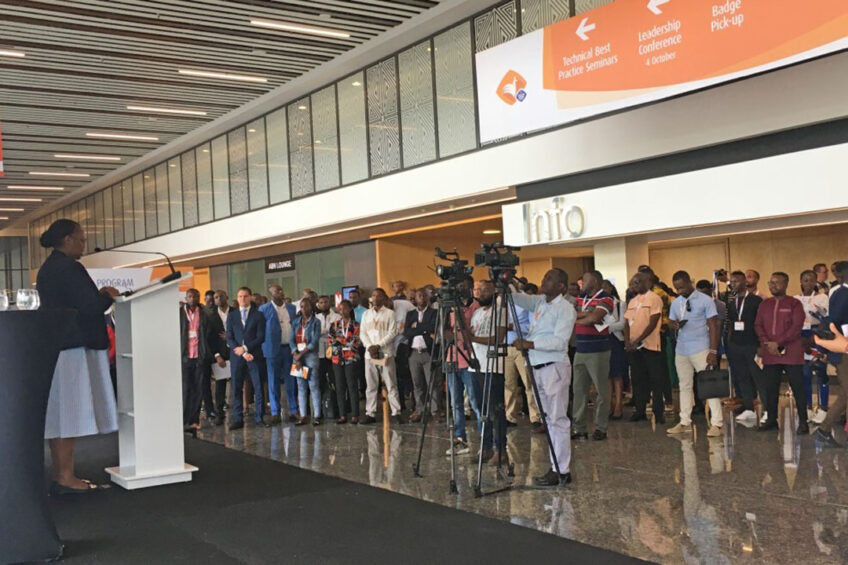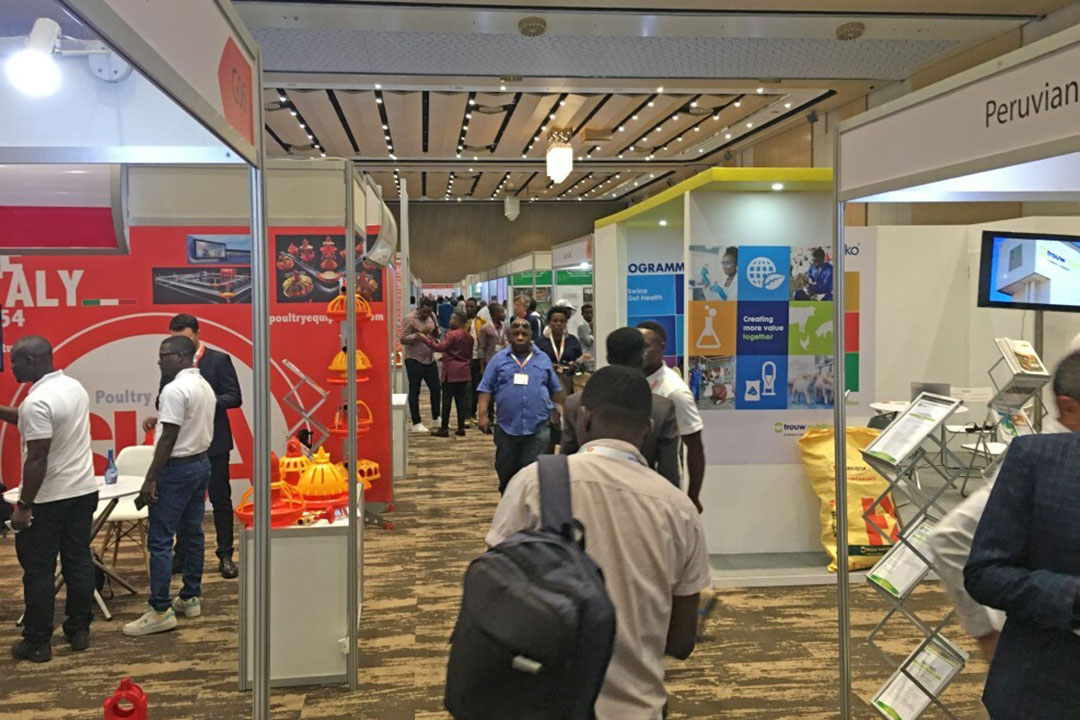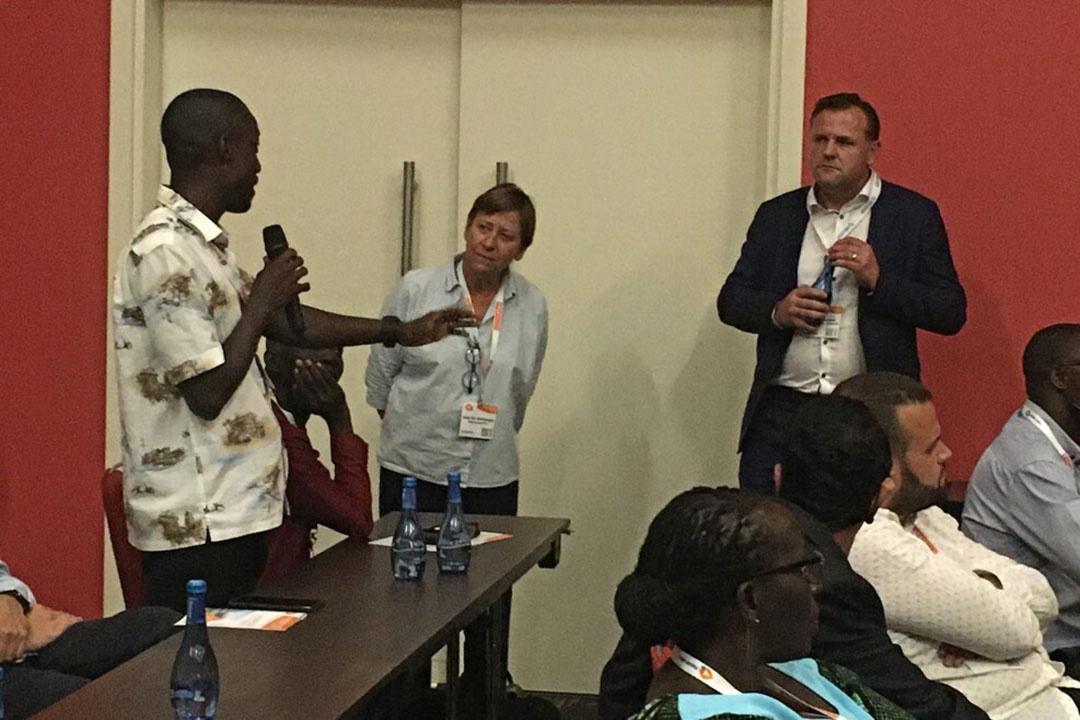Positive outlook for poultry in sub-Saharan Africa

Most countries in both East and West Africa are dealing with rising feed cost challenges that have caused drastic drops in profit margins in the past few months. Addressing this pressing issue, attendees at Poultry Africa could learn practical solutions showing them how to implement nutritional strategies to reduce feed costs along with best practices on poultry feed cost management. Besides challenges, the African economy offers huge opportunities with its GDP growing above global average.
The poultry broiler and layer industry of sub-Saharan Africa converged at the third edition of Poultry Africa in Rwanda for a stimulating business gathering with global suppliers and international speakers in the feed to food poultry supply chain. Nearly 1,600 professional delegates from 53 countries visited the 123 exhibiting companies to help promote a prosperous future in poultry.
Officially opening the event, the Honorable Minister of Agriculture and Animal Resources, Dr Gerardine Mukeshimana said, “Rwanda’s poultry industry is transforming from subsistence farming to more knowledge-intensive and market-oriented poultry farming.”
According to the Minister, poultry is one of the avenues by which to contribute to Rwanda’s national food and nutrition security, income generation and job creation. She stated that her department fully supports further development of the sector with subsidies, on the one hand, and tax cuts on feed additive imports, on the other.
“With traditional feed prices on the rise, more research is needed to formulate alternative sources of feed based on locally-available and easily accessible components,” added Mukeshimana. This general outline of the industry in Rwanda applies to many other countries in the region as well.
Mukeshimana added: “The poultry business is a growing agricultural sub-sector in Africa and it is expected to continue to do so as demand for meat and eggs grows further to demographic pressure, rising incomes and urbanization.”

Economic outlook
The positive outlook for the African poultry industry was underlined in a presentation by Rabobank global specialist animal protein, Nan-Dirk Mulder. He explained that the increase in feed costs is one of the key themes to be monitored in the development of the region.
“Short term, East and West Africa are dealing with this threat that has caused a dramatic drop in profit margins in the past few months, especially up until Q2 2022. As a consequence the year-on-year demand increase has stalled.”
He continued: “There is a need to upgrade the local feed supply chain. As an example, South Africa, Egypt and Kenya still lead African feed production and are less dependent on imports. The sub-Saharan feed industry is growing fast, especially in poultry feed, offering investment opportunities in the region, but at the moment there is still dependency on imports”.
Mulder’s positive outlook is mainly driven by mid to long-term forecasts. “First of all, the African economy offers huge potential with its GDP growing above global average (4%) and population growth of up to 2 billion by 2050. Until 2030 Africa’s increasing animal protein demand will be huge, with poultry being the winning protein, showing a 55% increase in demand in the next decade.
The reason for this is simple, says Mulder: “Poultry and eggs are the winning protein because of the fast cash flow, low feed conversion rates and serve as an ideal model for industry and smallholders scaling up.”

Focus on the basics
Despite the challenges that poultry farmers in Africa encounter, their aim is to get the most of out the genetic potential of their birds. “That is not always easy as the climate conditions can be harsh, health status can be questionable and chick quality, feed and vaccines are not always guaranteed,” says Vetworks poultry consultant, Hilde van Meirhaeghe.
At the seminar, entitled ‘Optimising performance in poultry’, she explained how to best manage the flock from the very first day of arrival on farm. “There is a lot that you cannot change, but you should focus on the things you can influence.”
According to Van Meirhaeghe, the farmer will be the first to notice if the birds are challenged, due to heat stress, for example. The farmer should know what to do and take prompt action to keep the birds happy in their environment. The farmer is also responsible for biosecurity on the farm, which is the best way to keep disease out and make a good profit in poultry production.
“Focusing on the basics is of the utmost importance,” says Van Meirhaeghe, explaining that this starts with the day-old chicks. “You want to know what was delivered on farm, which means you have to check.” Despite it being a tedious procedure, the poultry consultant advises doing a chick score. “This means that you check 10 chicks from 10 different crates.
The details do matter here. Are they of uniform weight, are their reflexes good, their eyes clear, the navel closed and clean, yolk sac absorbed and is their core temperature at 40°C? Only when you know the details, can you manage your new flock accordingly and get the best out of it.”
Join 31,000+ subscribers
Subscribe to our newsletter to stay updated about all the need-to-know content in the poultry sector, three times a week. Beheer
Beheer











 WP Admin
WP Admin  Bewerk bericht
Bewerk bericht